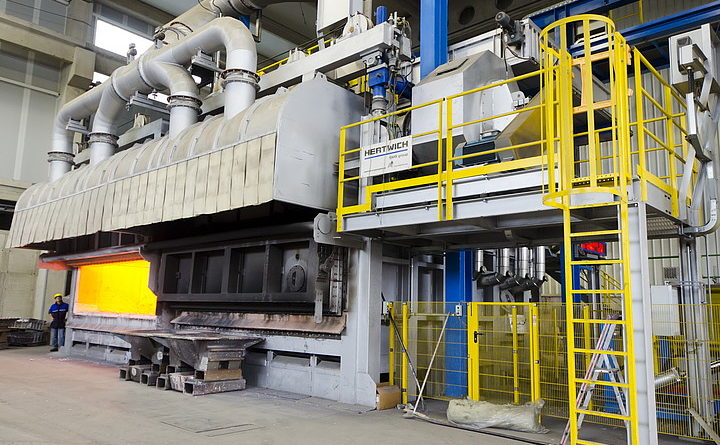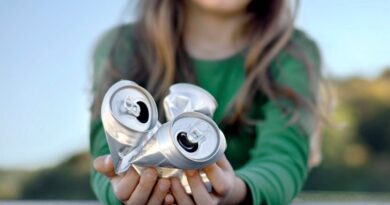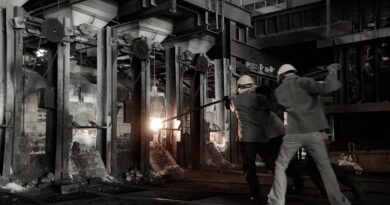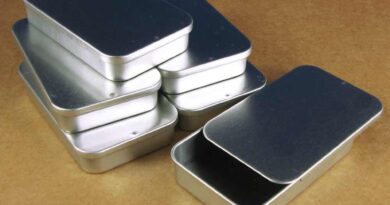Eliminating greenhouse gas in aluminium sector
Aluminium is a critical enabler of sustainable economic development. Lightweight, strong, durable, conductive and recyclable aluminium products are essential enablers of a low carbon future. They provide energy-efficient and carbon-saving solutions to high emitting but critical service-providing sectors, including energy, transportation, buildings and food & pharmaceuticals.
In 2018, global demand for aluminium was 95 million tonnes; two thirds (64 million tonnes) of which was met by primary aluminium (produced from ore) and one third (31 million tonnes) from recycled aluminium.
Rapid population and economic growth over the coming decades means global demand for aluminium will increase by up to 80% by 2050. This demand will be met by recycled and primary metal.
Despite increased projected recycled metal supply, the International Aluminium Institute (IAI) estimates that up to 90 million tonnes of primary aluminium will be required per annum in 2050.
The IAI is exploring realistic and credible technological pathways for 2050 sector-wide greenhouse gas emissions reduction in line with International Energy Agency’s scenarios. Under a Beyond 2 Degree Scenario (B2DS), the industry would need to reduce its total emissions to 250 Mt CO2e, from a 1.1 Gt CO2e 2018 baseline and a projected 2050 Business As Usual scenario of 1.6 Gt CO2e.
To achieve this, the IAI has identified three broad pathways for emissions reduction whilst meeting growing demand:
1. Pathway 1 – Electricity decarbonisation
2. Pathway 2 – Direct emissions reduction
3. Pathway 3 – Recycling & resource efficiency
All pathways will be a mix of technologies, including existing, new, under-development and yet-to-be-developed solutions.
ELECTRICITY DECARBONISATION
Primary aluminium production is an electrical energy-intensive process. More than 60% of the aluminium sector’s 1.1 billion tonnes of CO2e emissions (2018) are from the production of electricity.
By mid-century, under a B2DS-aligned scenario, such emissions would need to be reduced to near zero. Two-thirds of the sector’s electricity needs are met by power stations owned and operated by aluminium producers.
Most of these are fossil-based and are among the newest and most efficient of the industry’s capacity. Decarbonised power generation and the deployment of CCUS offer the most significant opportunity for emissions reduction for both power producer-consumers and those smelters purchasing from grids.
DIRECT EMISSIONS REDUCTION
The major sources of non-electricity related emissions in the aluminium sector are fuel combustion, smelter anode consumption, ancillary materials and transport. Accounting for around 400 Mt CO2e today and 650 Mt CO2e in 2050 under a Business as Usual (BAU) scenario, these sources are common to all producers, with minor variability in performance across the industry.
By 2050, under B2DS, these sources will need to be reduced to around 250 million tonnes, even as demand for the metal increases by 80%. Direct emissions from the combustion of fuels to produce heat and steam make up 15% of the sector’s emissions (2018).
For these thermal processes, electrification, green hydrogen, concentrated solar thermal energy, and carbon capture utilisation and storage (CCUS) offer potential pathways to decarbonisation.
RECYCLING & RESOURCE EFFICIENCY
Infinite recyclability without loss of properties is one of aluminium’s unique benefits. The recycling of post-consumer scrap today mitigates the need for almost 20 million tonnes of primary aluminium, avoiding around 300 million tonnes of CO2e every year.
When recycled metal is not retained in the economy, it is replaced by primary aluminium. Primary production today has a greenhouse gas emissions profile on average 25 times higher than the recovery of metal from post-consumer scrap.
Near 100% aluminium recycling rates, improved scrap sorting, elimination of pre-consumer scrap and metal losses could reduce the need for primary aluminium by 20% by 2050. This would deliver an additional reduction of 300 million tonnes of absolute CO2e emissions in 2050 -an impact of the same magnitude as direct emissions reduction under Pathway 2.
The pathway choices made by aluminium industry actors will depend on various factors, such as: unique energy endowments, raw material and scrap availability, regional policies, investment options and the availability, speed and cost of technology development and implementation.
In the end, it will take sector-wide and inter-sectoral partnerships to address this large-scale emissions reduction challenge while satisfying the growing demand for aluminium.
Finally, and crucially, with the cost of decarbonisation of the aluminium sector running to trillions of dollars, investment is the key enabler to a 2050 low carbon aluminium sector.




